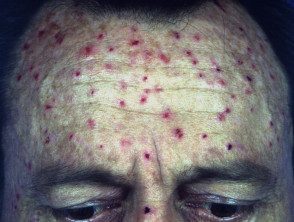What is uremic? pruritus?
Uremic pruritus is also called chronic pruritus associated with kidney disease (itching associated with CKD). Uremia refers to excess urea in the blood and occurs when both kidneys stop working (renal failure). Pruritus, or itching, is a common problem for patients with chronic kidney failure or end-stage kidney disease. It affects approximately one third of patients in dialysis and is more common with hemodialysis than continuous outpatient surgery peritoneal dialysis (CAPD).
Uremic pruritus is not associated with sex, age, ethnicity, duration of dialysis or cause of kidney failure. Pruritus does not arise when uremia is due to acute renal insufficiency.
What are the signs and symptoms of uremic pruritus?
Uremic pruritus is characterized by daily episodes of itching that tend to be worse at night and can prevent sleep. The itch may be generalized or located to one area, most often the back, abdomen, head, and / or arms. In hemodialysis patients, pruritus is lowest the day after dialysis and peaks 2 days later.
The skin may appear normal or dry (xerosis), with few or many scratch marks and / or selected sores.
Uremic pruritus (kidney itching)

Uremic pruritus (kidney itching)

Uremic pruritus (kidney itching)

Pruritus
What are the complications of uremic pruritus?
Scratching can cause impetigo (skin infection), prurigo (papules) and chronic, lichenified dermatitis / / eczema.
Uremic itching can be very unpleasant; about half of those affected are agitated or depressed. Uremic pruritus in hemodialysis patients is associated with a 17% increase in mortality.
What Causes Uremic Pruritus?
Uremic pruritus is believed to be due to a combination of factors including:
- Dry Skin
- Reduced sweating
- Abnormal metabolism calcium and phosphorus / elevated parathyroid hormone
- Accumulation of toxins
- Sprouting of new nerves
- Systemic inflammation
- Coexisting medical problems, particularly diabetes and liver disease.
Some patients have acquired perforating collagenosis.
What is the treatment for uremic pruritus?
The first step in treatment is to optimize dialysis. effectiveness. It is also important to try to reduce serum parathyroid hormone to normalize calcium / phosphorus.
Dry skin can be managed by using soap-free cleansers and applying emollients like sorbolene cream or petroleum jelly several times a day.
Menthol and camphor can be added to a emollient to cool the skin and relieve itching. Any localized itching can be reduced by frequent applications of current capsaicin if tolerated.
UVB phototherapy is the mainstay of treatment for severe uremic itching. Oral antihistamines and systemic steroids are generally not effective.
Other treatments that have been reported to help some people include:
-
Gabapentin and pregabalin in small doses (eg, 100-300 mg gabapentin, three times a week)
- Nalfurafine (opioid agonist)
- Activated carbon
- Thalidomide
- Cholestyramine
- Ondansetron
-
Dupilumab
In 2019, in a phase III clinical trial, a kappa opioid receptor agonist, difelikephalin, was reported to relieve itching in hemodialysis patients significantly better than placebo.
Kidney transplant usually results in resolution of the uremic itching.

